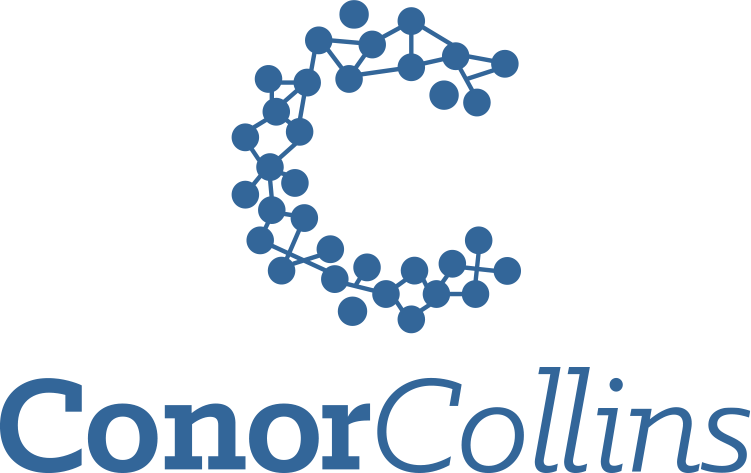A Cranial Nerve (CN) exam can be clinically valuable when assessing a concussion injury. This referral guide is intended to help practitioners make an appropriate and timely referral when combining a CN exam along with their assessment and client intake. A CN exam can also be used with other conditions besides concussions (e.g., headaches, cervical spine pain and dysfunction, neuropathy). The CN exam is a very important and valuable clinical tool.
There are several things to remember when integrating CN exam while assessing concussion injury:
- Cranial nerves are considered to be peripheral nerves (CN I & CNII are better classified as central nervous system structures as they are myelinated by oligodendrocytes).
- If an abnormal CN exam is observed, consider the underlying pathological factors responsible for creating concussion symptoms (i.e., neurometabolic cascade events within the brain).
- A CN exam can provide the clinician with accurate insight of how the individual is progressing from a concussion.
- In addition to the CN exam, multiple organ systems can be tested when utilizing certain advanced tests (such as the VOR head thrust/impulse test). The CN exam is foundational to further advanced testing with a trained practitioner. Additional training in concussion management benefits both the practitioner and the client and it promotes the safest and most effective clinical course through rehabilitation.
- The exam is guided by client tolerance. Never push through what the client can tolerate.
- Always err on the side of caution when developing a treatment plan/referral strategy for the client.
- If the client has not yet been seen by their primary care physician or any other medical professional within emergent care, it is strongly recommended that the client be assessed by someone who can diagnose a concussion.
- Be sure to refer appropriately and in a timely manner if red flags are present.
The chart below identifies each component of a CN exam within the context of concussion. For further review on CN anatomy and function, I recommend taking a look these resources:
- National Library of Medicine; Anatomy, Head and Neck, Eye Nerves (Nguyen JD, Duong H, 2021).
- https://www.kenhub.com/en/library/anatomy/the-12-cranial-nerves
|
Cranial Nerve |
Clinical Relevance for Concussion |
Referring Guide Based on Findings |
|
CNI: Olfactory |
Used to rule out red flag for further suspected pathology. |
If their sense of smell has been disrupted due to acute injury and the client has not been assessed by medical professionals, refer to emergent care. If there is a suspected fracture to the cribriform plate that has not been seen and diagnosed, this is a medical emergency. |
|
CNII: Optic |
Used to determine if diplopia, blurred vision, or any other alteration to vision is present, and disruption to pupillary reflex. |
If there are any disruptions or abnormalities observed to any ocular functions, a referral should be made depending on if other red flags are present. Red flags include (but aren’t limited to):
If no red flags are present, a concussion has been diagnosed, and concussion-specific treatment is indicated, the client can be referred to:
|
|
CNIII: Oculomotor |
Used to determine if pupillary reflex is intact and able to accommodate. Extraocular movement assessments can be used to also evaluate the oculomotor nerve. |
If there are any disruptions or abnormalities observed to any ocular functions, a referral should be made depending on if other red flags are present. Red flags include (not limited to):
If no red flags are present, a concussion has been diagnosed, and concussion-specific treatment is indicated, the client can be referred to:
|
|
CNIV: Trochlear |
In addition to pursuits and saccades, the superior oblique muscle is the prime intorsion ocular muscle aiding with convergence function. Convergence also requires the medial rectus muscle to bring the eye into adduction. |
If there are any disruptions or abnormalities observed to any ocular functions, a referral should be made depending on if other red flags are present: Red flags include (not limited to):
If no red flags are present, concussion has been diagnosed, and concussion specific treatment is indicated the client can be referred to:
|
|
CNV: Trigeminal |
The trigeminal nerve innervates muscles of mastication. Bruxism and jaw clenching can be observed in response to strong sympathetic tone of the autonomic nervous system. Strong autonomic sympathetic tone can be observed through sweating and flushing of skin of the face where the trigeminal distributions are located. |
Inability to clench or utilize muscles of mastication is a medical emergency. Refer client to emergent care. If no red flags are present, a concussion has been diagnosed, and concussion specific treatment is indicated the client can be referred to:
|
|
CNVI: Abducens |
Pursuits can give insight to function of this nerve and integration of ocular movements such as shift horizontal visual gaze via the lateral rectus muscle. |
If there are any disruptions or abnormalities observed to any ocular functions a referral should be made depending on if other red flags are present: Red flags include (not limited to):
If no red flags are present, concussion has been diagnosed, and concussion specific treatment is indicated the client can be referred to:
|
|
CNVII: Facial |
Testing of the muscles of facial expression can help rule out further pathology and red flags.
In addition, the facial nerve innervates the anterior two-thirds of the tongue, so asking about alteration to taste can help assess this CN in its entirety. |
Inability to utilize muscles of facial expression is a medical emergency. Refer client to emergent care for potentially Cerebrovascular Accident (CVA). |
|
CNVIII: Vestibulocochlear |
The whisper test can be used to determine auditory function. Advanced vestibular testing can used (when indicated) to determine vestibular function. |
If the client has experienced auditory loss or changes and has yet to be diagnosed for a suspected concussion, refer the client to emergent care. For vertigo-like/vestibular symptoms, it may be worth taking a look at “Referral Strategies for Persons Experiencing Vertigo-Like Symptoms” in Episode #45 of The Concast podcast. |
|
CNIX: Glossopharyngeal |
To evaluate this CN, ask the client if they have had any alterations in taste, as the glossopharyngeal nerve innervates the posterior one-thrid of tongue. |
If there are any new alterations in taste due to unknown or diagnosed reasons since their concussion injury, refer the client to emergent care.
|
|
CNX: Vagus |
Strong sympathetic drive can be observed through via multiple organ systems. Some example include (however not limited to): reported disruption of peristalsis, changes in breathing rate and depth, elevated blood pressure, and potential changes in appetite. When mentioning these examples, the vagus nerve is not solely responsible for increased sympathetic tone of the nervous system. Many other hormonal, immunophysiological, biopsychosocial factors contribute to an individual’s response to injury and/or stress. |
In addition, if there are any new alterations in taste due to unknown or diagnosed reasons, refer client to emergent care. |
|
CNXI: Accessory |
An increase in Upper Trapezius and Sternocleidomastoid postural tone may be observed due to increased sympathetic tone of the nervous system. These muscles are both seen to increase in tone when the nervous system is under a threat or perceived threat. |
Manual therapy is a great treatment option to achieve a parasympathetic shift from the nervous system. A practitioner who is familiar with managing concussion injuries also recognizes the importance of cervical spine strengthening exercises. In addition, using breathing to shift the nervous system into a parasympathetic state. |
|
CNXII: Hypoglossal |
This cranial nerve is evaluated by assessing for dysphagia (difficulty with swallowing) and for dysarthria (difficulty with speech). |
If dysphagia or dysarthria are present, this is a medical emergency. Refer client to emergent care. |
The above is intended to be a useful guide when assessing a client who has a concussion. Again, always err on the side of caution if unsure. Certainly making a timely referral can greatly benefit the client’s recovery. The CN exam is a great screening tool used to rule out red flags and gain clinical insight, and is an integral part of the assessment of concussion injury.
If you’re looking to grow your understanding of concussions and how to assess, treat, and rehabilitate this often daunting injury- registration is now open for the October 2022 course! Link here:
https://conorpcollins.com/courses/
References
Burgard, C. (2022, January 18). Referral Strategies for Persons Experiencing Vertigo-Like Symptoms. Conor P. Collins. https://conorpcollins.com/2022/01/referral-strategies-for-persons-experiencing-vertigo-like-symptoms/
Collins, Conor P. “Understanding Complexity of Concussion.” Accessed 2020.
“The Concast.” Dizziness and Vertigo, created by Conor P Collins, season 1, episode 45, Nov.
2020.
Nguyen JD, Duong H. Anatomy, Head and Neck, Eye Nerves. [Updated 2021 Jul 31]. In: StatPearls [Internet]. Treasure Island (FL): StatPearls Publishing; 2022 Jan-. Available from: https://www.ncbi.nlm.nih.gov/books/NBK549919/
Vasković, J., MD. (2022, June 28). 12 cranial nerves. Kenhub. https://www.kenhub.com/en/library/anatomy/the-12-cranial-nerves
About the Author
Chris is a Massage Therapist and acupuncture practitioner from Ingersoll, Ontario with a special interest in managing concussion and sports injuries. While not in clinical practice Chris has served as an Instructor in Massage Therapy at the Canadian College of Massage and Hydrotherapy.
With prior education and experience as a Kinesiologist, Chris has a passion for movement and how it translates to improved patient outcomes. Whether it’s managing your symptoms virtually, or assisting students in preparing for an exam, Chris is excited to help you on your journey.



Recent Comments